Seems like we've heard it all, and making a new social network seems pointless with Instagram and Facebook around. Statista predicts the global social networking market will hit a whopping US$189.50 billion by 2027.
If you reckon competing with Facebook or Telegram is a lost cause, you're spot on. These giants have snagged a huge market share. Investing in marketing won't guarantee solid user retention and a high Lifetime Value (LTV). Take Threads, for example, basically a Twitter clone with low retention and Monthly Recurring Revenue (MRR).
But that doesn't mean creating a social network is a no-go. Going niche might be the key.
In this article, I'll dive into how to pick the right social network niche and guide you from idea to development.
Industries That Can Benefit Most from Own Social Network App/Website
To make it big in social networking, focus on one thing instead of trying to cover everything. If you're thinking about making an app for sharing videos or photos, that might not work out. But, imagine creating an app where you can find free support and make friends to chat about your things—that's where the potential is.
Education
More and more online schools are being created. For example, with learning a language. And therefore, instead of using a multi-channel approach such as "made a call in WhatsApp, conducted a lesson in Zoom, sent the task to Miro, made a call in Jira", it is better to use 1 platform that can combine both the CRM system for the teacher, so and social networking for the student.
Example: Edmodo is a popular education social network used by over 60 million teachers, students, and parents worldwide. It provides a secure and private platform for educators to share resources, collaborate with colleagues, and connect with students and parents. Edmodo's estimated annual revenue is currently $13M per year. Founded in 2008, Edmodo now has more than 140 million users.
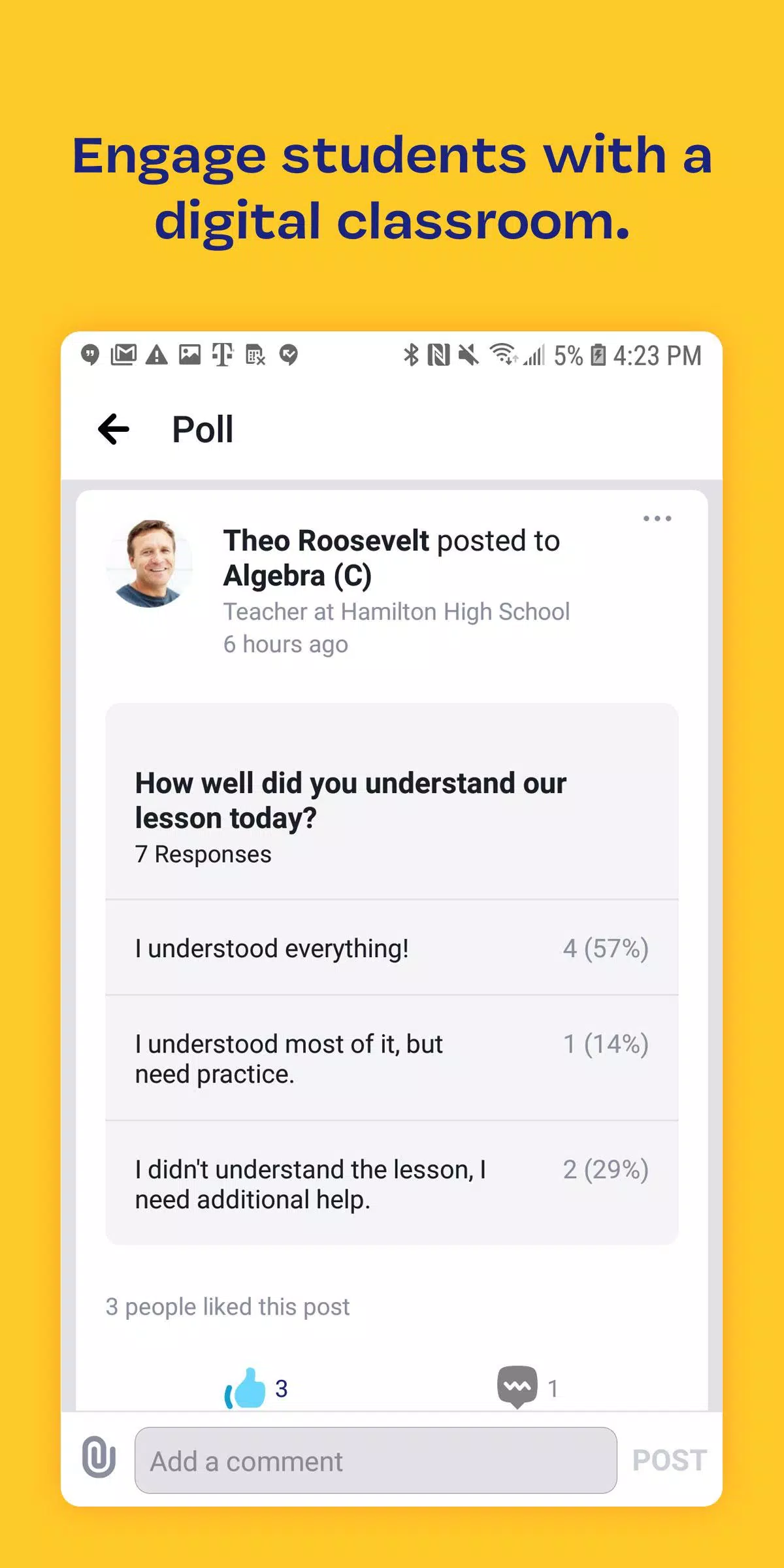
Healthcare
Healthcare providers can use social media to educate patients about their conditions, provide support, and connect patients with other patients and healthcare providers. They can also use social media to recruit new patients and staff.
Consider VaccApp, our client, as an example. VaccApp is a solution tackling the challenges parents face in keeping track of their child's vaccinations. It simplifies vaccination details, digitizes records for convenience, raises awareness about recommended shots, and helps parents stick to vaccination schedules through a user-friendly platform. And this applies to the social platform.
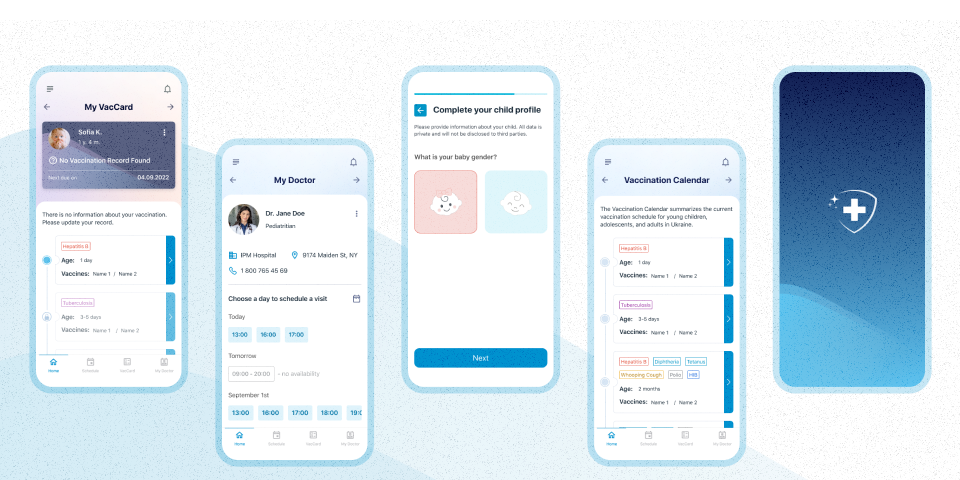
Finance
According to Statista, the global finance market is expected to expand by 11.98% from 2022 to 2027, reaching a market volume of US$2.50 billion in 2027. Financial institutions can leverage social media to educate consumers about their products and services, offer customer support, and maintain a positive reputation. As an illustration, we handled the UX/UI design and web development for Artsted—a unique platform providing affordable investment-grade artwork with transparent price history and artist career analytics.
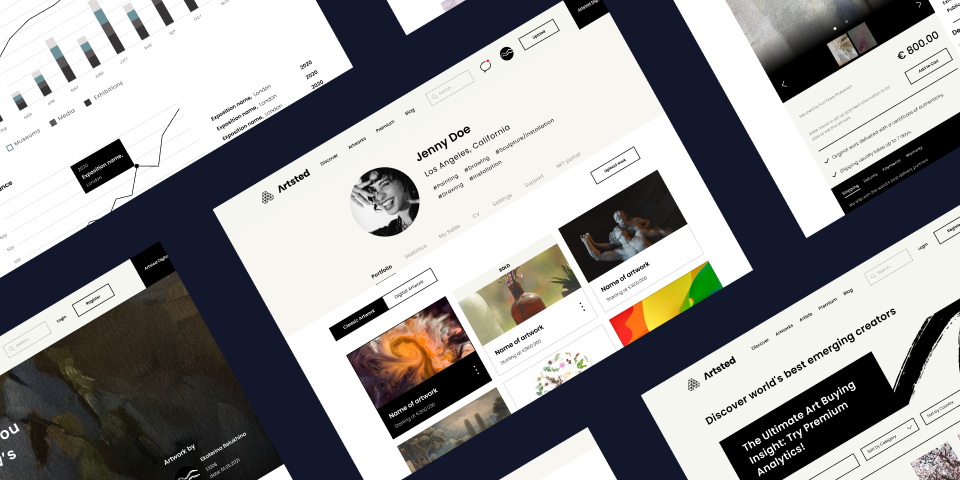
Travel and Hospitality
Market Data Forecast says that the global tourism and hospitality market is valued at around USD 9 trillion by 2027 and is expected to grow at an annual rate (CAGR) of 3%. Travel and hospitality companies can use social media to inspire and inform travelers, promote their destinations and services, and build relationships with travelers.
Example: Tripadvisor is a popular travel and hospitality social network with over 466 million users. It allows users to read and write reviews of hotels, restaurants, attractions, and other travel-related businesses. In 2022, the company's revenue worldwide amounted to roughly 1.49 billion U.S. dollars.

Real Estate
Real estate agents can make the most of social media to showcase their listings, connect with potential buyers and sellers, and cultivate client relationships. In the competitive housing market, demand is consistently outpacing supply. Particularly for new homes, prospective buyers are jumping on the limited inventory, lured by builder incentives. Additionally, it's anticipated that by 2050, a whopping 68% of the world's population will be residing in urban areas.
On a related note, we dived into real estate trends for 2024.
Example: Take Trulia, for instance—a real estate giant with over 250 million users, offering a plethora of features.
How to Сreate a Social Media App: Step-by-step Guide
Step 1: Identify The Market Fit
Before you start building your own social media network, it's crucial to identify the market fit. This involves understanding the needs, wants, and pain points of your target audience and determining whether your platform offers a unique value proposition that addresses them.
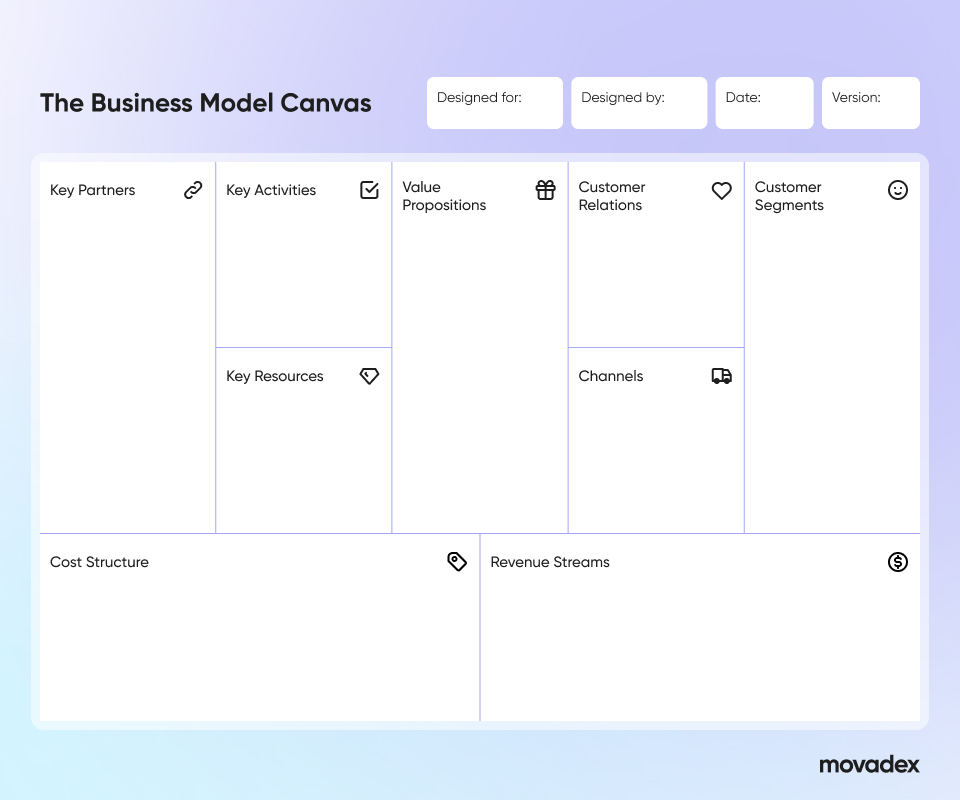
If you use the lean startup methodology (MVP), you can use this table as a template for your business model. Do your research, in which you first examine the size of the market (TAM, SAM, SOM) and whether it makes sense for you to enter here. If the answer is yes, then the next thing you should do is:
- Research existing social media platforms: Start by researching popular social media platforms, and niche platforms catering to specific communities. Identify their SWOT, user demographics, and how they engage their audience. For example, this is the kind of research our team did for our client for a pitch deck.

Identify gaps and opportunities: Look for areas where existing platforms fall short or fail to address specific user needs. This could be a lack of focus on a particular interest group, inadequate content moderation, or limited privacy features.
Step 2: Identify the Social Media App Type
After getting the first set of data, you need to pick the right kind of social platform. There are different types, so figure out what your target audience needs. If you're not a tech person and plan to get help from a software development and design agency, just decide on the type you want.
Social Networks
The main aim of these platforms is to bring people together. Facebook is a top player, helping connect friends and family worldwide. X (ex. Twitter) gives you a quick flow of news and updates, and LinkedIn is a go-to for professional networking.
Essential features: photos, videos, events, groups, and targeted advertising.
Examples: Facebook, X, LinkedIn.
Let's use FreeVestia as a social network example. The FreeVestia platform serves as a one-stop shop for startups and investors aiming to connect and engage in business. Whether you're a startup seeking capital or an investor scouting for the next big opportunity, our platform has you covered. Equipped with features such as investment tracking, market research, and report generation, you'll find all the essential tools for success. Our contributions included branding, UX/UI design, and web development for FreeVestia.

Media Sharing Networks
It’s about showcasing your content. Instagram, TikTok, and YouTube are your creative playgrounds. Whether it's captivating images, short and snappy videos, or longer-form content, these networks offer diverse opportunities for expressing your creativity and connecting with your audience.
Essential features: editing tools, augmented reality (AR) effects, and influencer marketing opportunities.
Examples: Instagram, TikTok, YouTube.
Let's take TasteBuds as an example of the vertical positioning of media-sharing networks. TasteBuds is a culinary social media platform crafted to enhance your cooking skills and bring joy to your loved ones with your culinary creations. As a design and development agency, we handled the design and development of their MVP.
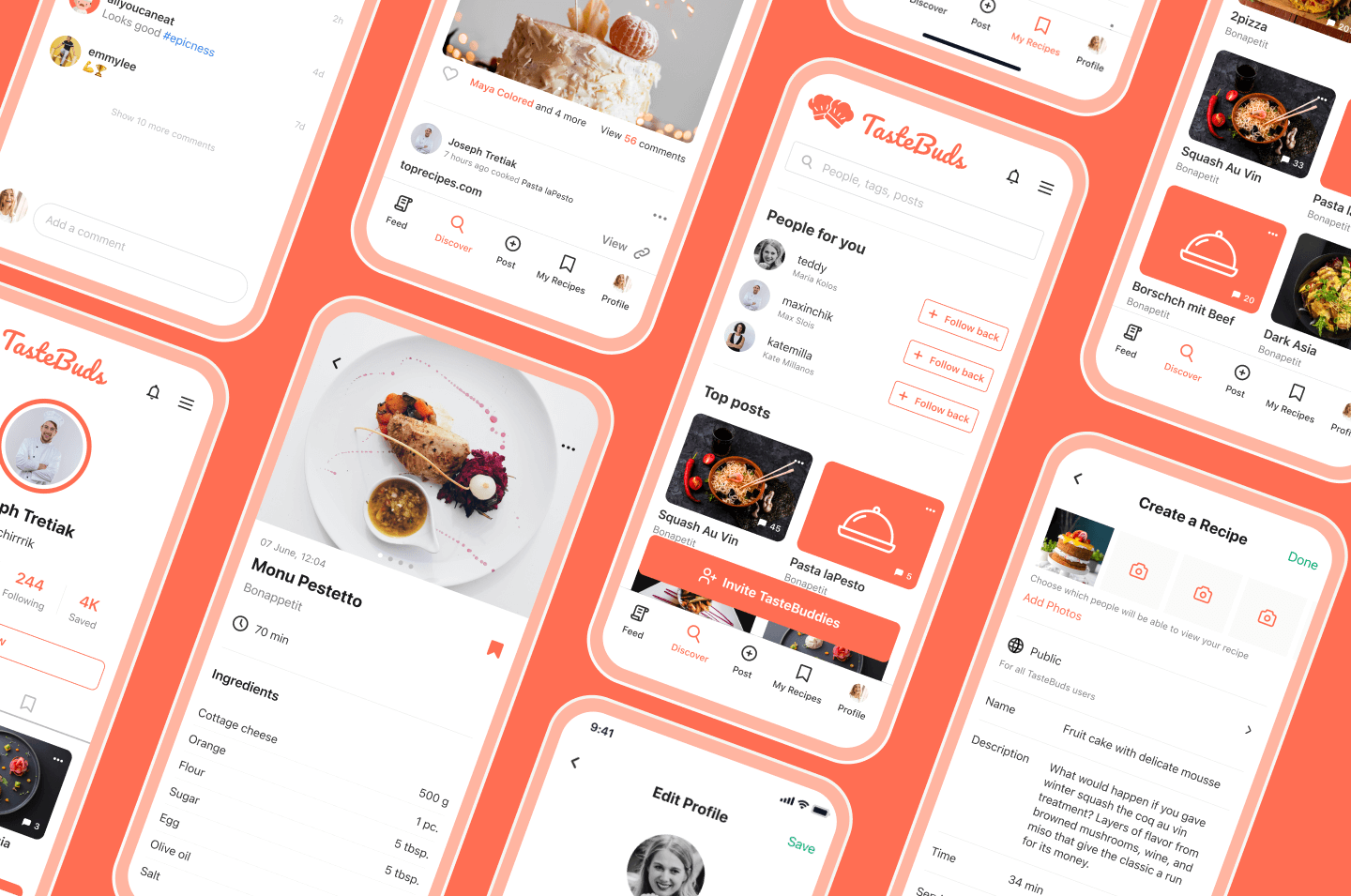
Discussion Forums
Imagine platforms like Reddit or Quora, where discussions unfold with questions and answers beneath each post. Think back to your school or university days, where you could google a problem and find the right solution detailed in the comments by someone generous enough to share their knowledge.
Essential features: ask-and-answer format, communities of interest, and reputation systems.
Examples: Reddit, Quora, Digg.
Content Sharing Networks
It's like having your digital scrapbook or magazine, where you can save, savor, and revisit content that sparks your creativity or curiosity. Pinterest lets you create visually stunning boards and discover new ideas, while Flipboard curates personalized feeds based on your interests.
Essential features: Pinning images and articles, creating curated boards, and sharing recommendations.
Examples: Pinterest, Flipboard
Consumer Review Networks
Share your experiences and help others make informed decisions. As I mentioned earlier in the article, platforms like TripAdvisor offer insights through reviews of tourist destinations. Additionally, Yelp directs you to top-notch restaurants and local businesses, and Zomato aids in uncovering hidden culinary gems. Your input not only enriches your own experiences but also contributes to a community of informed decision-makers.
Essential features: user-generated reviews, ratings, photos, and location-based search.
Examples: Yelp, Zomato, TripAdvisor
Livestreaming Platforms
Twitch is a prime example of such a platform. The main goal is to Interact with your audience in real-time and create interactive experiences. Global live-streaming market is valued at USD 1219.19 Million in 2022 and is projected to attain a value of USD 6555.32 Million by 2030. (source: Vantage Market Research)
Essential features: live streaming capabilities, audience engagement tools, and monetization options.
Examples: Twitch, YouTube Live
Blogging and Publishing Networks
Let’s consider Medium. Medium is a dynamic blogging and publishing platform that fosters a diverse community of writers and readers, offering a space for compelling narratives and thought-provoking content.
Essential features: content creation tools, monetization options, analytics and insights.
Examples: Medium, WordPress.com
Relationship Networks
The most notable example is Tinder. However, there is potential for growth in this genre of social network. Case in point, our client Truffls, which functions as the "Tinder for Jobs," is a mobile and web job search app based in Germany, providing a fast and enjoyable job hunting experience through a swipe-based system for quickly perusing job openings, allowing users to effortlessly explore job details and company profiles.
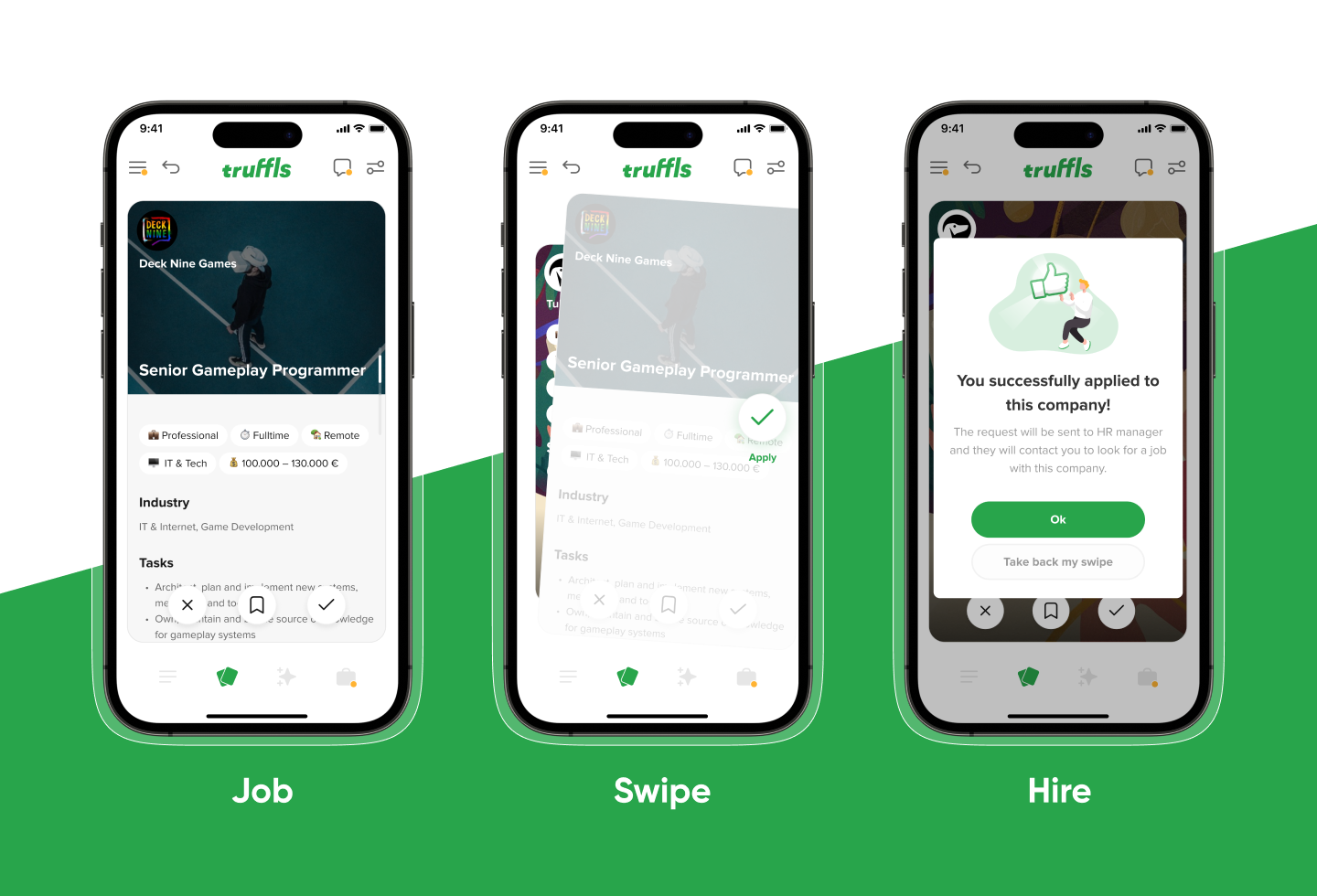
Therefore, another crucial lesson is not to be afraid to blend different niches, particularly when targeting generations like millennials and Gen-Z.
Step 3: Choose a Business Model
This involves determining how you will generate revenue, attract users, and keep them engaged.
When choosing a business model, consider the following factors:
What are their needs and willingness to pay?
How are other social media platforms monetizing their users?
What is your goal for your platform?
Ensure your data collection and monetization practices comply with relevant laws and regulations.
So what are the types of monetization on social platforms?
Advertising
This classic model relies on displaying targeted ads to users based on their interests and behavior. Platforms like Facebook and Instagram generate significant revenue through banner ads, sponsored posts, and native advertising seamlessly integrated within the user experience.
Benefits: High revenue potential, flexible targeting options, and scalability.
Challenges: User fatigue from excessive ads, potential for privacy concerns.
Best for: social networks, media sharing networks, discussion forums, consumer review networks.
Subscriptions
The freemium model offers a basic version of your platform for free, with premium features like exclusive content, advanced tools, and increased storage unlocked through monthly or annual subscriptions. This attracts a wider audience and offers a value proposition for users who require additional functionality. Platforms like Medium and Substack have adopted this model successfully.
Benefits: Recurring revenue stream, dedicated user base, and ability to offer premium content or services.
Challenges: Attracting and retaining paying users, balancing freemium model to avoid alienating free users.
Best for: media sharing networks, discussion forums, live streaming platforms, blogging, and publishing networks
E-commerce
Social media platforms can transform into effective sales channels. Platforms like Instagram and TikTok leverage their user base and influencer marketing capabilities to facilitate direct sales of products and services. This model benefits businesses by reaching a targeted audience and users by offering a convenient shopping experience within the platform.
Benefits: Direct sales channel, monetization through product commissions, and convenience for users.
Challenges: Building trust and brand awareness, managing logistics and fulfillment, and ensuring product quality.
Best for: media sharing networks, livestreaming platforms.
In-app purchases
This model involves offering virtual items or digital goods within your platform. Avatars, customization options, virtual currency, and access to exclusive content are examples of in-app purchases seen on platforms like Roblox and Twitch. This model generates revenue through microtransactions, appealing to users who want to personalize their experience and unlock additional features.
Benefits: Recurring revenue stream, user engagement through personalization and virtual rewards, and additional monetization layer.
Challenges: Balancing in-app purchases with gameplay experience, avoiding excessive monetization tactics, and ensuring user satisfaction.
Best for: livestreaming platforms, and relationship networks.
Data monetization
By collecting and analyzing user data, platforms can gain valuable insights about user behavior and preferences. This data can be anonymized and sold to businesses or research institutions for targeted advertising, market research, and product development. This model requires careful consideration of data privacy regulations and transparent user communication, but it can offer a significant revenue stream for platforms with large user bases.
Benefits: Diversified revenue stream, valuable insights for businesses and research institutions, and potential for targeted advertising.
Challenges: Balancing data collection with user privacy, ensuring transparency and user consent, and complying with data protection regulations.
Best for: social networks, media sharing networks, consumer review networks.
Step 4: Choose Features
The features of your social network and its monetization model are inherently linked. Nonetheless, let's delve into the essential features that should be present in every social network app.
Registration and login
The ability to sign up and sign in with social media profiles, such as Facebook, Instagram, or Google. Streamline the process while enforcing secure password guidelines to prioritize cybersecurity.
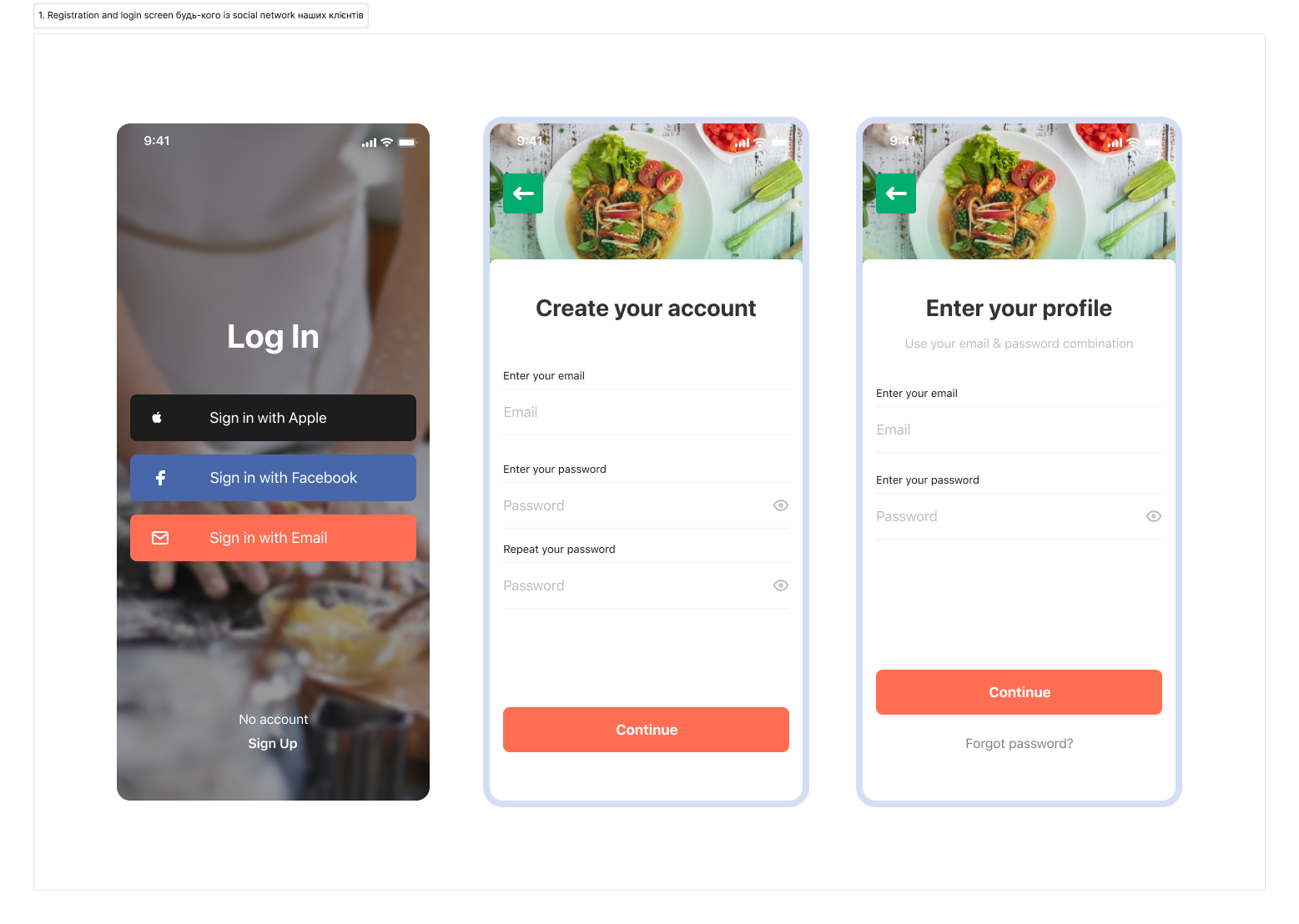
User profiles
Create individual profiles for users, encompassing details like name, photo, and location. Depending on the nature of your app, user profiles can also incorporate information about interests, personal preferences, and recent activity.
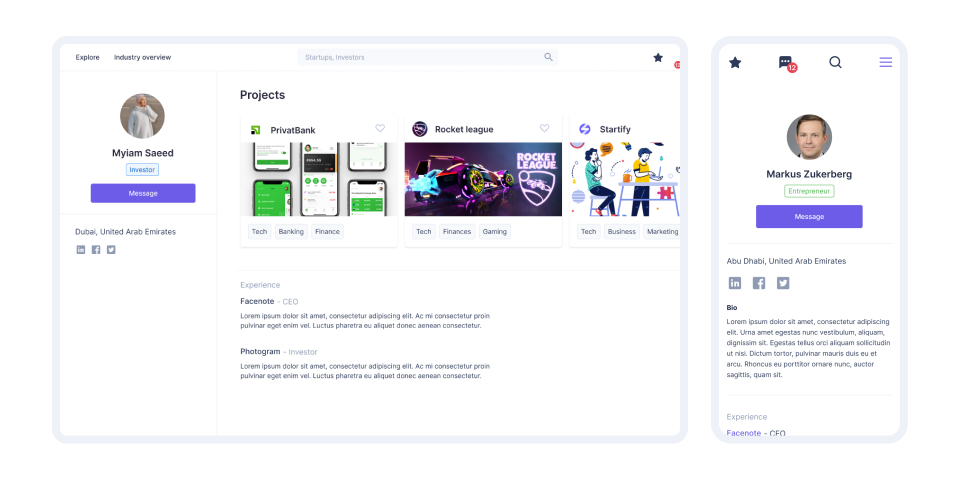
Messaging
Let users send private messages within the app—only visible to them. Whether or not to include this depends on what kind of app you're making.
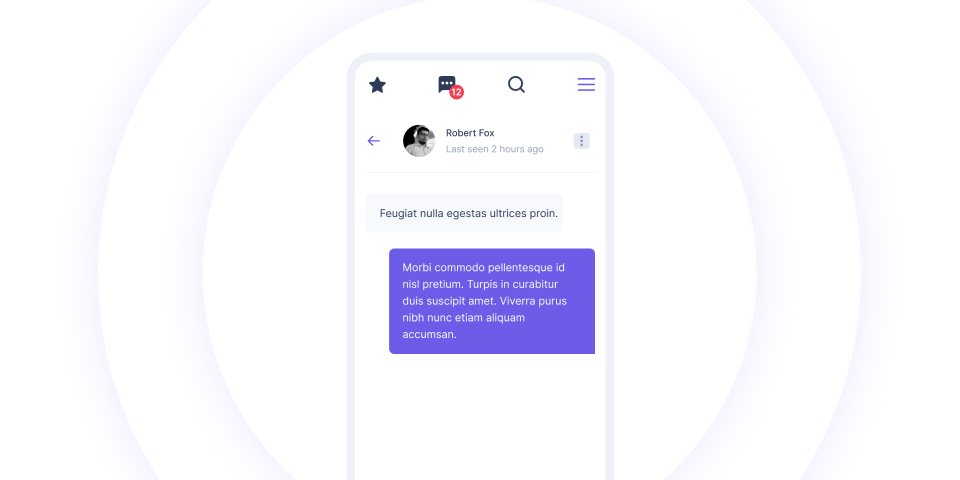
Following/followers
Enable users to follow others and be followed back to create customized feeds.
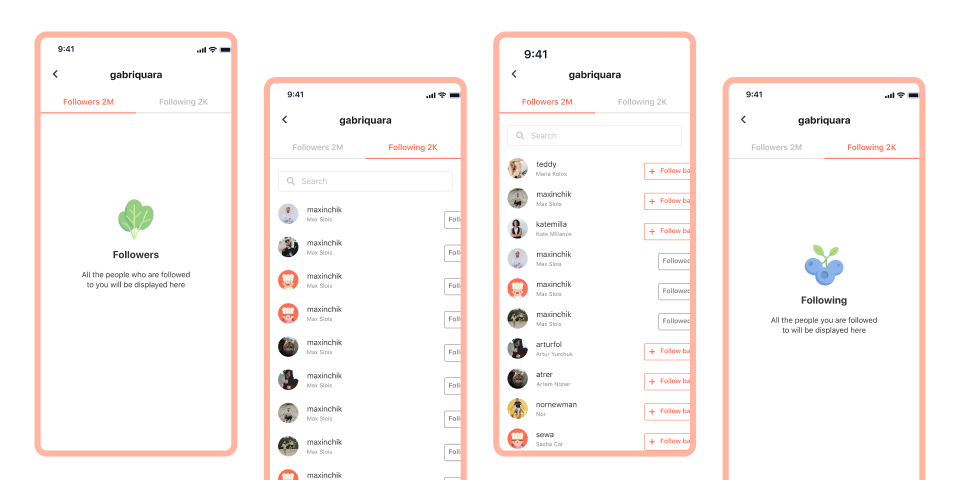
Feed and Posts
Present personalized feeds featuring updates from followed users, trending content, and suggested connections. Additionally, allow users to share content based on the nature of your social network.

Notifications
Alert users about new activity, including mentions, likes, and messages.
I've outlined the essential features that are a must, but as technology advances, integrating AI and ML is possible, and we, as a software company, can assist with that. Other potential features encompass moderation, live streaming, API integration, or content editing.
Keep in mind: when developing an MVP, it's advisable not to incorporate all features simultaneously. Research to gauge demand first, and then we can collaborate on designing and developing additional features tailored to your needs.
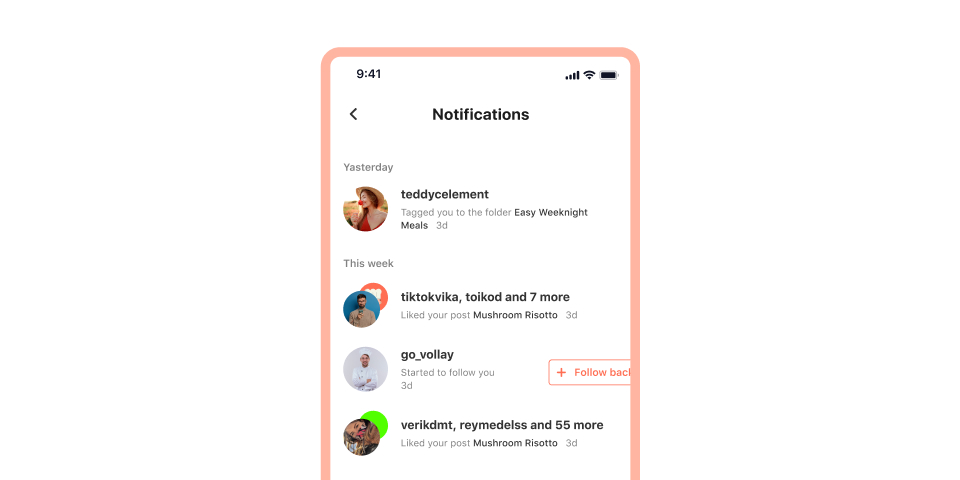
Step 5: Design
The primary emphasis is on the user experience: to make it as user-friendly as possible, drawing on the rules and insights gleaned from other social platforms.
Typically, designing an MVP can take around a month. If it's a more extensive project, it may take longer. You have the option to bring a designer onto your team full-time, opt for outstaffing with someone from an agency temporarily, or engage an outsourced team. We covered the distinctions between outsourcing and outstaffing in our article.
Step 6: Develop
Find reliable developers. If you're not into the technical stuff and want to hand over the development process, the best bet is to hire an outsourcing agency. They'll give you a project manager who takes care of everything and keeps you in the loop with simple updates.
And, as detailed in the table below, we've outlined the average cost for developing a social network app at Movadex.
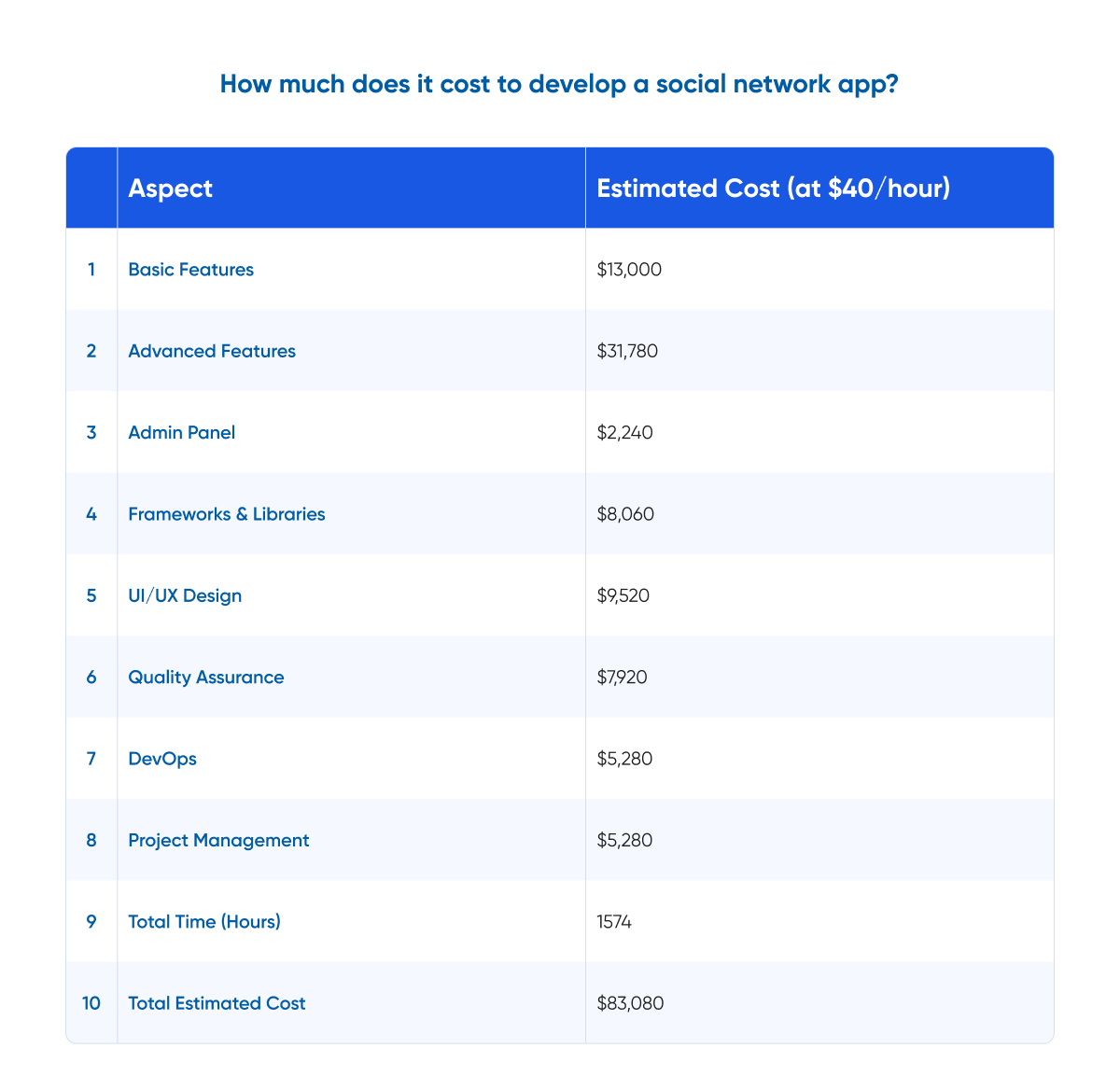
Step 7: Quality Assurance
In simple terms, this involves testing your application, identifying bugs, and fixing them. We strongly advise against overlooking this step, as it helps prevent issues such as constant error displays or application crashes, creating a more pleasant user experience.
While creating a high-quality website or app is a crucial part of the process, ensuring that it not only meets but exceeds user expectations is equally important. With years of experience and a robust quality management system, our team ensures that all deliverables adhere to the highest and most competitive standards. Our Quality Assurance (QA) engineersleverage best practices and advanced technologies to understand your business goals, delivering outcomes that align seamlessly.
For insights into our approach to testing social media networks, you can read more about Quality Assurance Automation for Cooking Social Media.
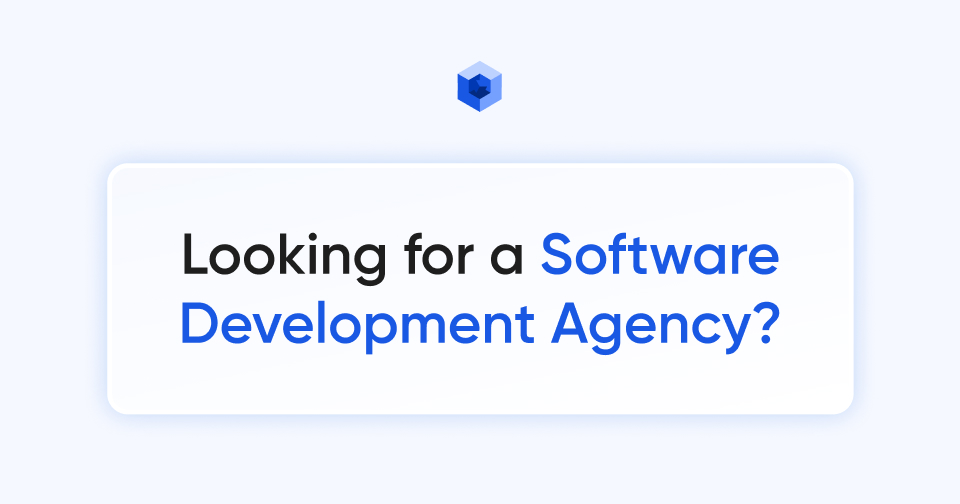
We're here to assist you. With 7 years of experience, 4 significant awards from leading listing services in development and design, and a portfolio featuring 4 major social network development cases, feel free to schedule a free call. Let's discuss your business needs and explore how we can best support you.

![How to Create a Social Network App in 2024: A Comprehensive Guide [+Examples]](/_next/image?url=%2Fimages%2Farticle-covers%2Fhow-to-create-a-social-network-app-in-2024-a-comprehensive-guide-examples.png&w=3840&q=60)


